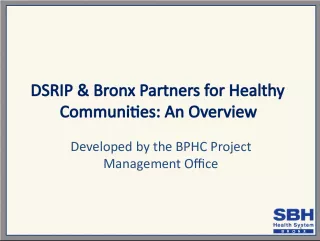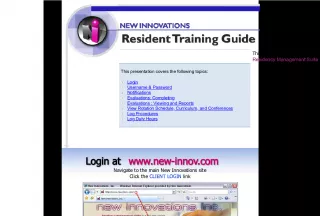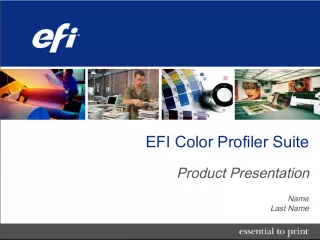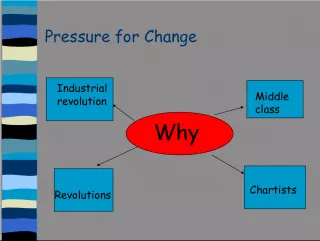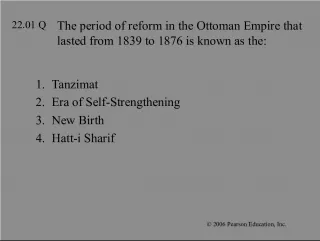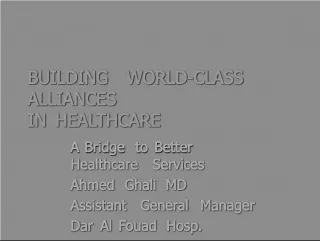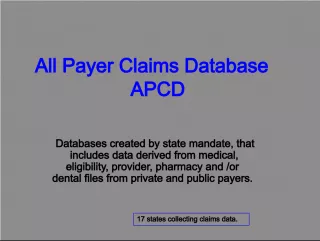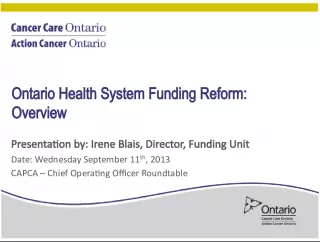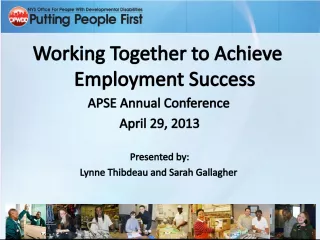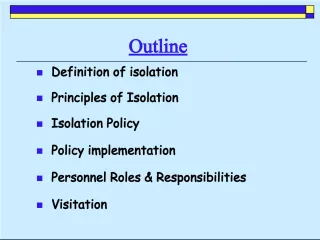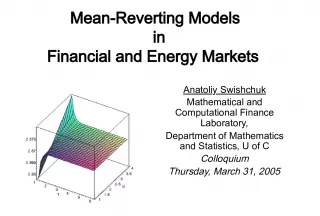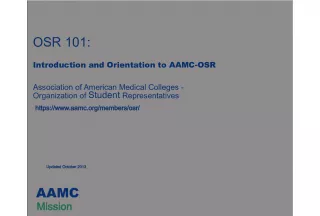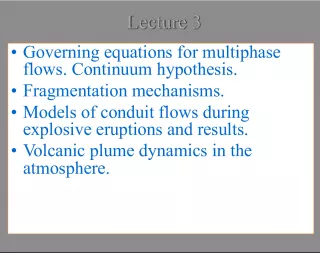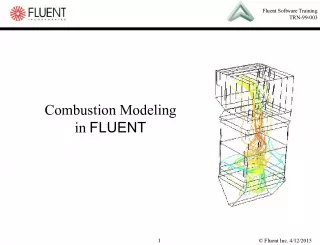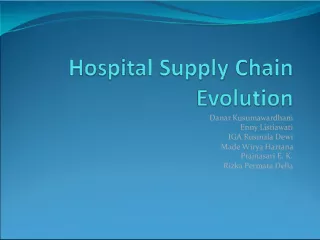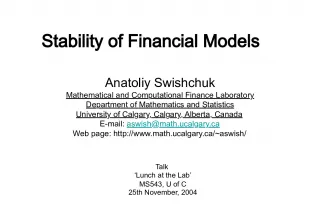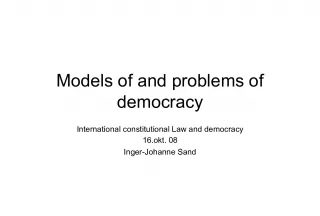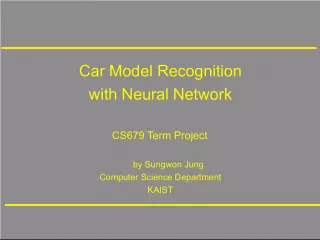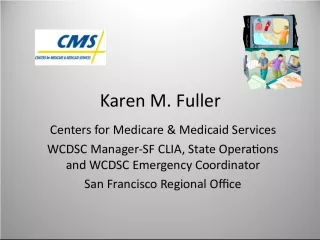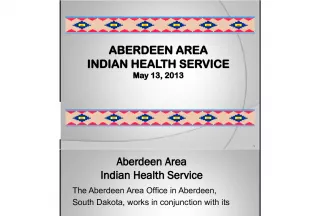Adoption of C Suite Models for DIOs GME in Healthcare Reform Era


Learn how DIOs GME can utilize C Suite business models and metrics to effectively address healthcare reform issues. Understand the importance of empirical data, quality indicators, dashboards, and other tools to advocate for resources and prioritize institutional goals. Presented by Ann Dohn and Nancy Piro.
- Uploaded on | 0 Views
-
 zosianorman
zosianorman
About Adoption of C Suite Models for DIOs GME in Healthcare Reform Era
PowerPoint presentation about 'Adoption of C Suite Models for DIOs GME in Healthcare Reform Era'. This presentation describes the topic on Learn how DIOs GME can utilize C Suite business models and metrics to effectively address healthcare reform issues. Understand the importance of empirical data, quality indicators, dashboards, and other tools to advocate for resources and prioritize institutional goals. Presented by Ann Dohn and Nancy Piro.. The key topics included in this slideshow are C Suite, DIOs GME, healthcare reform, empirical data, quality indicators,. Download this presentation absolutely free.
Presentation Transcript
1. Confidential For Discussion Purposes Only Conflict of Interest Ann Dohn No conflicts of interest to disclose Nancy Piro No conflicts of interest to disclose
2. SES:065 Using C-Suite Business Models and Tools to Address Issues faced by DIOs/GME in the New Era of Healthcare Reform Ann Dohn, MA DIO, Director of Graduate Medical Education Stanford Health Care Nancy Piro, PhD Education Specialist/Program Manager Stanford Health Care
3. Confidential For Discussion Purposes Only Background The adoption of business models and metrics historically found in the corporate world are now being widely used by Healthcare C-Suite executives. This places DIOs/GME leaders in a vulnerable position. We must learn new ways of communicating and process thinking that align themselves with philosophies such as Streamlining and Lean". We need to think in terms of empirical data, metrics, quality indicators, dashboards, A3s, fishbone diagrams, etc. However, the C-Suite models and processes actually can enable the DIO /GME to better advocate for resources based on data, empirical evidence, and focus on high priority areas for the institution.
4. Confidential For Discussion Purposes Only Objectives & Session Focus This session will focus on use of available data tools as well as evaluation metrics that enable DIOs/GME to communicate effectively with the C- Suite. Participants will be exposed to the A3 tool, which is extremely useful in solving inter-departmental problems Other tools, e.g., scorecards, fishbones, paretos, and trend analyses will be incorporated into the presentation. At the conclusion, participants will be able to apply the A3 model to challenging institution specific situations and discuss available metrics and development of an approach to resolution the situation.
5. Confidential For Discussion Purposes Only Purpose Mission, Vision, Values Strategies Complex Care, Coordinated Care Objectives Goals, Operating Plans, Dashboards Performance Improvement and Management Understanding C-Suite Priorities 5 STANFORD OPERATING SYSTEM
6. Confidential For Discussion Purposes Only Understanding C-Suite Language Hot Spots RVUs Visibility Wall KAIZEN Continuous Improvement GEMBA problems are visible (or make them visible) and the best improvement ideas come form going to the genba leadership goes to the departments/wards to look for waste and opportunities to improve or practice kaizen. Five Whys ask why 5 xs to get to the . RCA Root Cause Analysis 4 Ms 5 Ss A3s SMART Fishbone Diagram Ishikawa Chart 6
7. Confidential For Discussion Purposes Only Understanding C-Suite Language: Lean Focus and Tools Make problems visible not hide them or not talk about mistakes/problems Fix problems permanently get to the root cause and eliminate it. Focus on the value and respect for people. Lean Tools Kaizen Gradual, unending continuous improvement of processes Processes must be improved to get improved results By improving and standardizing activities and processes, Kaizen aims to eliminate waste GEMBA make problems visible the best improvement ideas come form going to the genba leadership goes to the departments/wards/units to look for waste and opportunities to improve or practice kaizen. Elimination of WASTE - 3Ms Problem Solving A3s 5 Whys Fishbone Diagrams (Ishikawa Charts) 4 Ps / 4 Ms 5 Ss
8. Confidential For Discussion Purposes Only Kaizen Basics Focus is on small, incremental change (not necessarily huge leaps, innovation) Quality Control = quality of people A company that is able to build quality into its people is halfway to building quality outcomes Respect for People Only people produce improvementsmachines only degrade over time
9. Confidential For Discussion Purposes Only Lean Tools: 3Ms All about Waste- Identifying it and Removing it MURI = Waste of overburdening people or equipment/resources MURA = Waste of unevenness, variability in processes MUDA = Waste of using resources without creating added value
10. Confidential For Discussion Purposes Only Five Whys Problem Solving Method Keep asking Why until you discover the root cause of the problem No magic in 5 might be 3, or 7, or 10 Why do we? (conduct orientation in person, fill out multiple forms, take on line training for non MDs)
11. Confidential For Discussion Purposes Only Lean Tools: Fishbone Charts using the 4Ms 4 Ps M anpower/Personnel M aterials M ethod(s) M achines / Equipment P eople P rocess P olicy P rinciples
12. Confidential For Discussion Purposes Only Ishikawa Diagram of ER Prolonged Wait Times Materials Methods/Process Manpower/People Machine\Equipment WHY? WHY? WHY? WHY? xxx hr wait time in ER
13. Confidential For Discussion Purposes Only Sorting Simplifying Sweeping Standardizing Self Discipline = Seiri = Seiton = Seiso = Seiketsu = Shitsuke 5Ss - Mnemonics Retained Quick Exercise
14. Confidential For Discussion Purposes Only 5Ss in Action 14
15. Confidential For Discussion Purposes Only What is an A3? Very simply.a piece of paper that is 11 in height and 17 in width
16. Confidential For Discussion Purposes Only 1. What is the problem or gap? (What are we trying to improve?) 2. What causes are preventing us from meeting our target(s)? What are the root causes? 3. Based on data, what are the causes in order of importance? 4. Which actions will address the most important causes? Effect/Problem Cause Cause Cause Cause Cause #1 Cause #2 Cause #3 Cause #4 Goals (Cause) Actions Target Current Performance Gap By Who & When Cause Cause 4 Steps of A3 Thinking: The Simple A3
17. Confidential For Discussion Purposes Only 1. What is the problem or gap? (What are we trying to improve?) 2. What causes are preventing us from meeting our target(s)? What are the root causes? 3. Based on data, what are the causes in order of importance? 4. Which actions will address the most important causes? 4 Steps of A3 Thinking: The Simple A3 Goal (Cause) Actions By When/ By Who
18. Confidential For Discussion Purposes Only What is an A3? 18
19. Confidential For Discussion Purposes Only Why Use an A3? Creating the A3 encourages systematic problem solving and a standardized method of communication Presenting the A3 fosters consensus to move forward Discussing the A3 fosters critical analytic skills, communication, respect 19
20. Confidential For Discussion Purposes Only When to use an A3? Determining when to use an A3 can be as simple as asking the following questions: Is the situation difficult enough to warrant using the A3 to provide structure? Will there be ongoing discussion for some time so the report has communication value? Is there a good reason to document and capture the knowledge in some fashion? 20
21. Confidential For Discussion Purposes Only Issue/Problem Statement: Background and Importance: Problem Analysis: Goals/Dashboard Metrics: Future State and Counter Measures: Follow Up: Sustain Results: Implementation Plan: Sponsor : Participants: Title Date Revised: Version #: Start Date: Revised Date A3 Template
22. Confidential For Discussion Purposes Only What Type of Information is Included in an A3? The Top of the A3 Chart Accountability Who is responsible for the project? Sponsors, Team Leaders Project Title Brief description of the project Project Team All people involved in the development and completion of the project Draft Status Date and version 22
23. Confidential For Discussion Purposes Only What Type of Information is Included in an A3? Left Side The left side contains information and discoveries about the current state Issue (the problem) Objective description with data Stated through the customer Background History Significance (how does this fit within the organizational goals?) Baseline Simple graphic of current state Requires observation Includes major pain points (problem areas within the process) Goals / Dashboard Metrics Data that will be measured to provide evidence of success Problem Analysis Identifies the root cause of current state problems The 5 Whys, Fishbone, Pareto, etc. 23
24. Confidential For Discussion Purposes Only The right side develops the vision and action plan for the goal Future State The ideal state you want to achieve Countermeasures What you will need to change to get from current state to the desired future state Implementation Plan How the countermeasures will be achieved Show who, what, when and outcome (accountability) Follow-Up What will be done to ensure the project is maintained Sustain Results The measured outcome or ongoing measurement of the projects impact Often the direct measure of the problem 24 What Type of Information is Included in an A3? Right Side
25. Confidential For Discussion Purposes Only How Do You Create an A3? 1. Identify a project or problem Write a description Be objective customer focus Maintain a limited scope Learn the significance or history Interview, study, read, etc. 2. Observe and draw workflows (process flows) Gemba Interview staff Map the process from A-Z (butcher paper) Identify problem(s) within the process Confirm findings with frontline staff 3. Measure the current state Collect data Manual (i.e. Paper surveys, counts) Database (i.e. EMR) Upstream vs. Downstream Validate data with frontline staff 25
26. Confidential For Discussion Purposes Only How Do You Create an A3? (Continued) 4. Set goal(s) around measurements Consider what is ideal Consider what is possible Engage / speak with front line staff Be SMART S = Specific M = Measureable A = Attainable R = Realistic T = Timely 5. Analyze the problem and identify root causes Interview stakeholders (ask the 5 Whys) Use measurements to identify biggest problem (Pareto) 6. Identify the future state and countermeasures Describe/envision the ideal state of the process Brainstorm solutions to root causes Select countermeasures and list in A3 Draw a simple future state diagram 26
27. Confidential For Discussion Purposes Only How Do You Create an A3? (Continued) 7. Determine how countermeasures will be implemented Identify stakeholders (all persons affected by the changes) Ensure the right people are involved/aware Consider communications Set timelines for achieving steps/countermeasures 8. Determine the follow-up plan Identify how you will maintain the intervention How will the intervention be hard-wired/ What is the visibility plan? Consider future actions required to improve he outcome 9. Monitor results Allocate time for measuring results after implementation Measure and analyze results Report results 10. Continuously review the A3 Does the story flow well? Is it easy to understand? Is the report neat/organized? Revise 27
28. Confidential For Discussion Purposes Only Benefits of Using an A3 A3s offer a simple & structured approach to reporting solutions to problems Helps define a standard for all of the organization to use Provides a clear and concise method of reporting information Content can be made visible and accessible to all Promotes communication and teamwork Leads to reduction of waste and improved processes Supports continuous improvement 28 A picture is worth a thousand words
30. Confidential For Discussion Purposes Only EXERCISE 2 - Creating an A3 Think about a problem youd like to solve back home Use the A3 Template Hand Out : 30
31. Confidential For Discussion Purposes Only A3 Template can be downloaded @ www.gme.stanford.edu GME Community Templates A3
32. Confidential For Discussion Purposes Only Visibility Wall Examples
33. Confidential For Discussion Purposes Only Dashboard Examples Overall Program Report Card AIR - APEs Program Expansion CCC Matrix 33
34. Confidential For Discussion Purposes Only Overall Program Report Card Example - Comparison 34
35. Confidential For Discussion Purposes Only AIR / Annual Program Review Dashboard Example 35
36. Confidential For Discussion Purposes Only Program Expansion / Funding Dashboard 36
37. Confidential For Discussion Purposes Only Report Card Trending Example
38. Confidential For Discussion Purposes Only Resident Performance Dashboard
39. Confidential For Discussion Purposes Only Dashboard Summary Data-driven decisions Multiple sources Comparable measures allows for tiering of programs Institutional Review / AIRs Timely, visual and easy to identify trends Pre-emptive Easy for Leadership C Suite to read Easy for CCCs to use
40. Confidential For Discussion Purposes Only Questions? 40
41. Confidential For Discussion Purposes Only Contact Information: Nancy Piro, Program Manager/Education Specialist npiro@stanford.edu Ann Dohn, DIO adohn@stanford.edu http://gme.stanford.edu/
